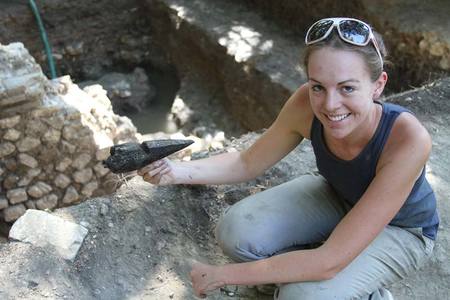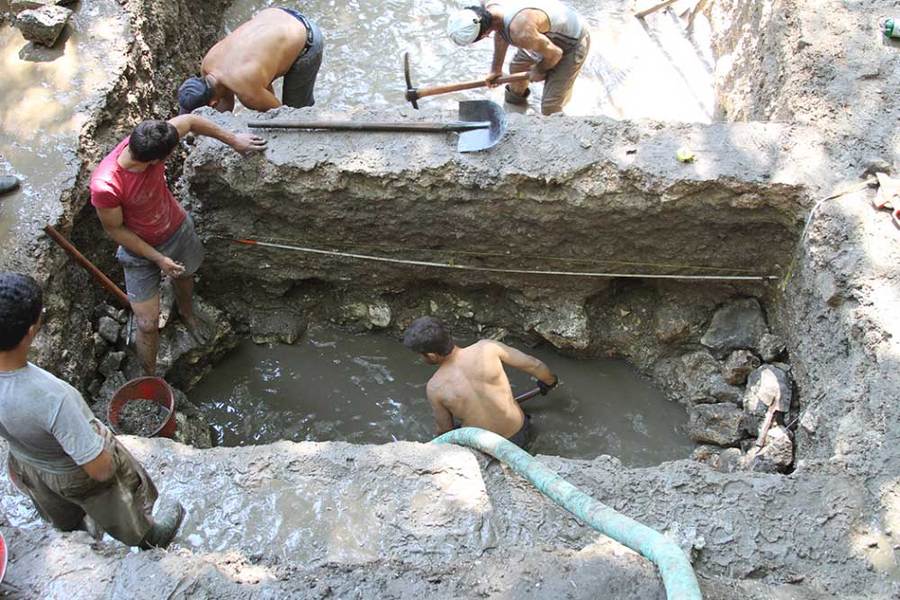Wet-Site Archaeology
 Wooden plow share, 3rd century BC
Wooden plow share, 3rd century BC
A major aim of the Roman Forum Excavations Project has been to examine the wet-site archaeology of Butrint. Having worked to overcome the problems of waterlogging since 2005, the project developed methods to excavate effectively below the water table, using a system of drainage trenches (used as sumps) and water pumps. Deep deposits have yielded important evidence not only for the earliest urban phases of Butrint but also for the formation processes of the Butrint headland. Characteristically, waterlogged deposits have preserved organic materials extremely well. For the first time, ancient wooden objects have been discovered at Butrint, in addition to seeds, leather, hair, and other organic remains.
 Wet-site excavation, below the Basilica floor
Wet-site excavation, below the Basilica floor
